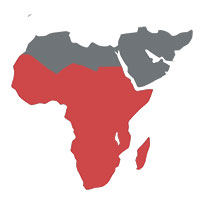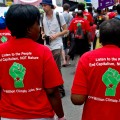Innovative Climate Finance
Julian K | December 6, 2011.
As climate change worsens and the solutions continue to develop commercial feasibility, why does climate financing still lag behind?
Climate financing in developing countries is one of the key issues at this year’s UN climate change negotiations in Durban. The last sixty years of development aid have shown that classical means of finance; such as loans, grants, equity and technical assistance have their limits and that new models of finance are necessary.
Innovative instruments play an increasingly more important role in climate finance, as a recent report entitled Innovative Climate Finance, presented in Durban reveals. These instruments include green credit lines, risk sharing instruments, support for carbon markets and combining grants and loans; a tool called ‘blending’. They need to be “effective, efficient and transformative,” Murray Ward, a GTripleC consultant, presenting the study said. “The goal of these instruments is to get private investors on board.”
 Stanford professor and climate change consultant, Thomas Heller believes that it is crucial to include the private sector in financing the fight against climate change. “We should learn how to take advantage of the different kinds of financial engineering structures that have evolved in the private sector,” he said. However, he believes that government still has to play an important role. “The risks are often too high for the private sector. So the state has to provide security and take certain risks,” he underlined. “As a private investor you sometimes want to have the state on board. Because you don’t want to be in a situation where you have a legal argument with the state that is hosting you.”
Stanford professor and climate change consultant, Thomas Heller believes that it is crucial to include the private sector in financing the fight against climate change. “We should learn how to take advantage of the different kinds of financial engineering structures that have evolved in the private sector,” he said. However, he believes that government still has to play an important role. “The risks are often too high for the private sector. So the state has to provide security and take certain risks,” he underlined. “As a private investor you sometimes want to have the state on board. Because you don’t want to be in a situation where you have a legal argument with the state that is hosting you.”
However, it is not clear how climate financing money flows actually work. The Bilateral Finance Institutions Climate Change Working Group of the United Nations Environmental Programme (UNEP) have tried to assess the various money flows within the climate financing framework. These flows are difficult to follow, since they pass through not only bilateral, but also multilateral institutions, appear in various budgets at the same time and don’t have a common denomination. The main objective of the working group therefore was to identify the nature and the scale of these financial flows. By following the various ways through which money reaches mitigation and adaptation projects, UNEP researchers were able to account for financial flows of 15.7bn USD in 2010. This is an increase of 22% compared to 2009.
According to the report, classical means of finance still make up the majority of the instruments.
For successful financing of mitigation and adaptation in developing countries an increase in the use of innovative financing tools is crucial. The Green Climate Fund, agreed upon in Cancun and to be discussed in Durban, is a chance to institutionalise these new and innovative financing tools.













comment